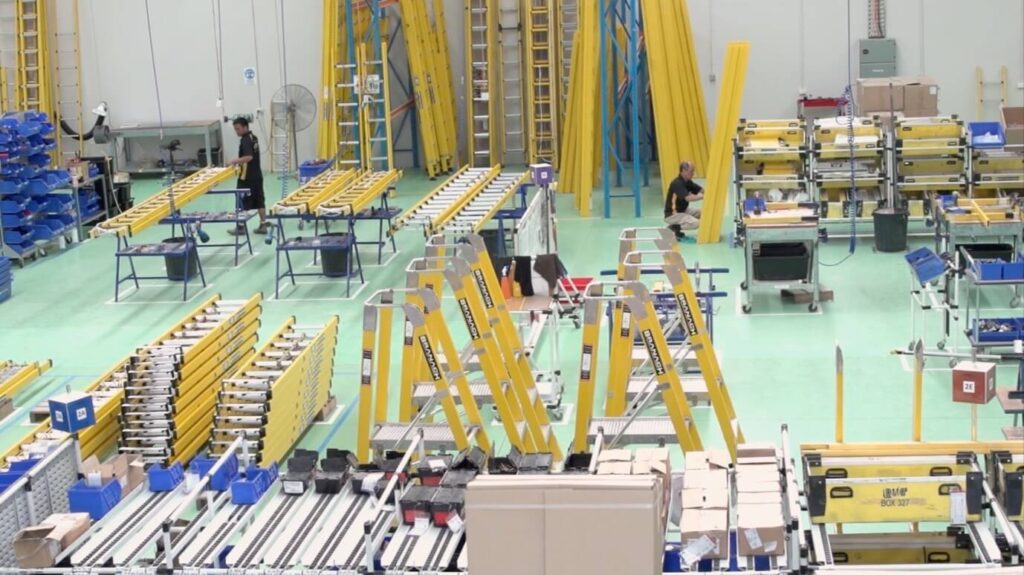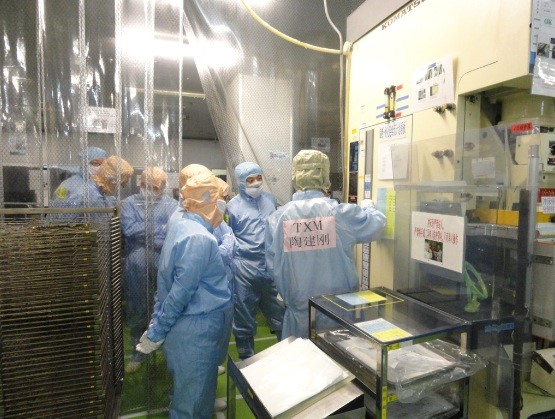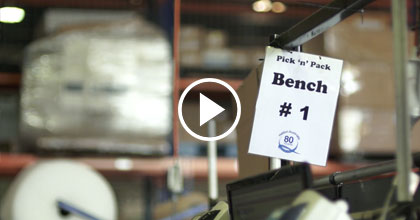Many businesses aspire to achieve a Lean Transformation and a few succeed.
So, what are the keys to success and what are the pitfalls when you embark upon a Lean transformation?

What is a Lean Transformation?
Like many phrases used in business there is no clear definition for a lean transformation.
Putting the Emphasis on “Lean”
One interpretation is to place the emphasis on the word “Lean” and consider a Lean transformation to be transforming a company to become Lean. Becoming “Lean” is the objective of the transformation.
The question then becomes, “how do we know we are Lean?”. To help with this there are a range of tools to measure your company’s degree of “Leanness”. You might aim to achieve an award such as a Shingo Prize or an accreditation such as ISO18404 to validate your business as truly “Lean”.
My problem with this approach is that aceing a Lean assessment or winning a Lean prize does not necessarily mean that your business is delivering its strategy and achieving its overall goals.
By necessity, most third-party Lean assessments are also quite generic and may not reflect the specific needs and strategy of your business.
Putting the Emphasis on “Transformation”
My preference therefore is to place the emphasis on “Transformation”. A Lean transformation therefore is a transformation in business performance achieved through Lean. The transformation is the objective, and Lean is the means of getting there.
The advantage of this approach is that you can focus your application of Lean to achieve the specific transformation that your business needs.
Here’s a video on sustaining Lean transformation:
Five Common Mistakes in Lean Transformation
The internet and LinkedIN is constantly quoting figures on the woefully low success rates of Lean transformation efforts. If these numbers were to be believed, then no one would (or should) bother with Lean transformation principles.
In reality we see great results from our customers’ Lean efforts. However we also see a lot of common mistakes repeated by companies and these are easily avoided.
Making “Lean” the Objective
As I mentioned in my comments about the definition, you should not make “being Lean” the objective. “Lean” is not a strategic goal, it is a means of achieving strategic goals.
If you set Lean as the objective your first problem is the definition of success. What is “Lean”? Does it mean that your business has to emulate Toyota in every way?
It is so vague that no matter how hard you try, someone will always tell you that you are not “Lean” enough, hence the inevitable failure.
As well, choosing Lean as the objective, will tend to lead you to want to apply every aspect of Lean and every Lean tool regardless of their relevance to the specific needs of your business.
Avoid the “Cookie Cutter” Approach
There are several “off the shelf” Lean transformation programs available. Some are proprietary programs promoted by consulting companies and some are based on external assessments. I would also include Lean Six Sigma in this category.
Some of these are very well thought out and detailed. For senior executives I can understand that these off the shelf solutions are very tempting as they come with a ready-made deployment program, a wealth of Lean tools and often software to centrally track progress.
The problem with this approach is that you are implementing someone else’s system (usually a consultant’s) and are reliant on them to maintain this system. It will never be a perfect fit for your organisation and its needs. As well the step-by -step, tick the box approach can remove the opportunity for your team to develop the skills to develop and apply their own approach.
The approach to Lean practices should be adapted to every business and even to every site within the business. None of the most successful Lean companies I know achieved this through using an off the shelf “cookie cutter” approach to Lean. Every one of them developed their own system.
“Sheep Dipping” Doesn’t Work (Lean Training)
Another common approach is to train everyone in Lean initiatives and hope that will lead to a transformation.
We call this “sheep dipping”.
This usually involves a massive amount of employee time and resources, although the blow is softened in some countries by the availability of government training funding (poorly targeted in my view). Knowledge alone is not the key to achieving a Lean transformation model. It requires the delivery of knowledge to be supported by the right leadership behaviours at every level and by change to culture.
This does not come through a lot of training. Training without an overall strategy and direction will lead to small local improvements, but certainly not a Lean transformation.
Avoid an Overly Top Down Roll Out
Lean Transformations need to be supported by top management and are generally launched from the top.
However, for the transformation to be successful it has to involve leaders at every level. Some businesses use a top-down coercive approach to getting site leaders and middle managers to participate.
This might mean setting targets for the number of “modules” completed, the number of staff suggestions or the number of improvement projects and linking these to personal performance goals.
Mandatory reporting might also be imposed.
In the short term, while the pressure is on, this will get things done. However, the minute the pressure is eased, and top management moves to focus on something else, the Lean program and all its rules and checklists will be quickly dropped.
The Seven Steps to a Successful Lean Transformation
In my view a successful Lean transformation journey meets three criteria.
- Firstly, it must have achieved the goals that the business set out when embarking on the Lean transformation.
- Secondly the transformation must lead to sustainable change where the application of Lean thinking becomes part of business as usual at every level of the organisation.
- Thirdly the Lean transformation should lead to improvement but should also create a desire within the organisation to continue to find improvements, that is a culture of continuous improvement.
Start with “Why Lean Transformation?”
The first step and the most critical success factor for any Lean transformation is to know why you are doing it.
Your Lean transformation must be driven by your business strategy. What are the improvements in performance and capability that your business must achieve to deliver your strategic goals. Before you embark on your Lean transformation you need a clear vision, strategy and business plan.
Lean then becomes an essential part of delivering that vision.
Align the Whole Executive Team
To achieve a real transformation, you must align top leaders.
If Lean is seen as an operations initiative, then you can get significant improvement, but you won’t get a true transformation, and Lean is unlikely to become a permanent part of the culture of the organisation. This is because the change in behaviour and processes occurring in operations will not be mirrored in other parts of the organisation and this will inevitably lead to conflicts.
Therefore, at the start, time must be taken to educate the whole leadership team and engage them in developing the Lean transformation process.
Develop a Framework
Once your senior Leadership team has agreed on how the Lean transformation fits with the business strategy and the goals priorities for Lean, then you should develop your own Lean framework. The most famous Lean framework is the Toyota “house” but we recommend that you develop your own for your own business.
This will include the elements that are most relevant for you. Presenting it graphically is a good idea, but it also does not have to be a “house”.
Chose an image that is relevant to you. For example, a paint manufacturer we have worked with chose to express their Lean framework as a paint brush, which is also a nice metaphor.
Measure the Lean Framework
Once you have defined your framework, then you need to measure your current performance against that framework. We recommend developing your own diagnostic tool that reflects the specific elements of your Lean framework, rather than using an off the shelf diagnostic.
Measure each site at the start of the process and then approximately annually to track improvement. Don’t use the diagnostic as a battering ram. For example, linking diagnostic scores to individual performance is likely to lead to perverse outcomes, where managers focus on improving their scores rather than improving the business.
Instead use the diagnostic as a tool to highlight areas that need focus and then develop specific action plans to address those areas. Managers should be measured on following through on the actions rather than the scores themselves.

Establish a Strong Project Governance Process With A Steering Committee
Your Lean transformation program will run into many challenges and without strong governance runs the risk of losing its way.
Establish a steering committee with senior leadership representation and ensure they meet regularly. To make the best use of time, the steering committee needs a chair and agenda and action minutes taken of each meeting.
Also establish simple (not onerous) reporting regime, so leadership can track the progress of the program and the results it is delivering.
“Think Global Act Local”
Your Lean transformation program is likely to have identified some high-level issues that apply across the whole business.
Therefore, there are elements of the framework that will need to be deployed everywhere. Often these are foundation tools like visual management and 5s. However, don’t be too rigid in the deployment approach.
Engage leadership at each site or function in the development of improvement plans.
What are the key goals for the site or function and how can the Lean transformation be targeted to assist in the achievement those goals. It’s a careful balance, between a rigid top-down deployment that is resented as “extra work” another “head office initiative” and a “free for all” where every site and function is running their own Lean transformation plan independent of everyone else.
However, getting the balance right is essential to getting a broadly supported and sustainable Lean transformation.

Build Internal Capability
At the start of this article, one of the mistakes I listed was an over-emphasis on training. But this does not mean there isn’t a role for training. You need to build internal capability to deploy and sustain Lean across the business.
The specific action plans for improvement need to be backed up by training of individuals. This can have a multiplier effect when each individual project is aligned to the overall high-level goals for the site, function and overall business.
As well, the opportunity to gain training and a qualification is an incentive for people to actively participate in the Lean transformation.
It Never Ends
Finally, a key discovery about a Lean transformation is that it never ends.
Once you achieve your original goals, you will see a whole range of other improvement opportunities to focus on. Lean transformation is a journey, not an event.
In fact, when you find yourself and everyone in your team are constantly highlighting areas for improvement and constantly taking the initiative to make improvement, then that is probably the best sign that your Lean transformation has been successful.
I like to say that I have never known a truly great Lean company that told me how great they were.
Instead, great companies always believe they can do better.






